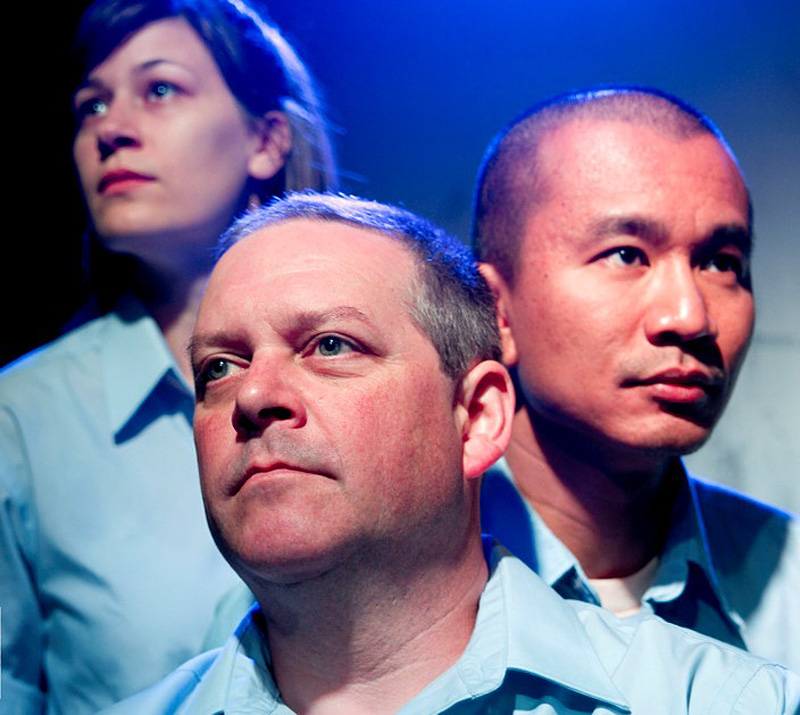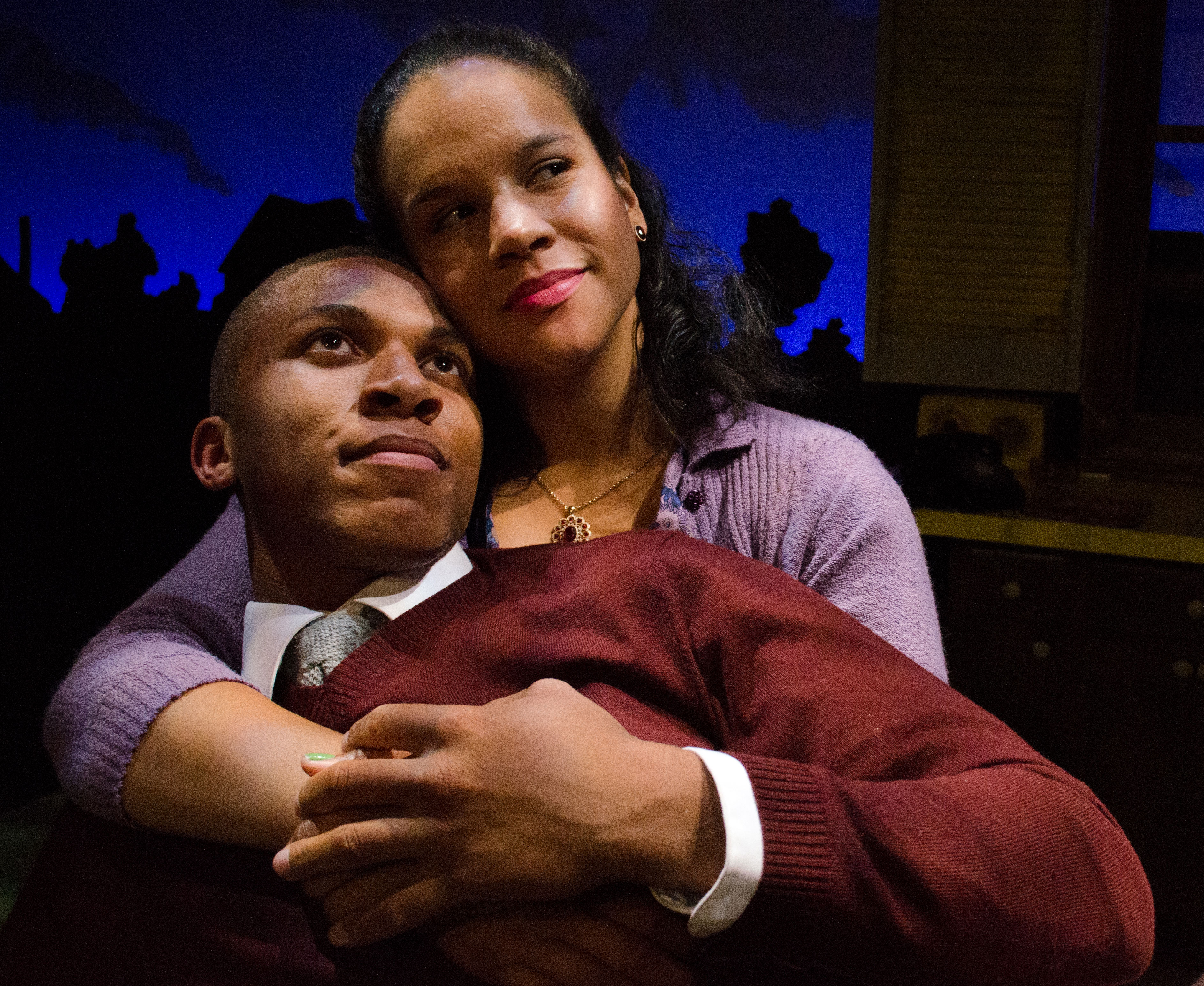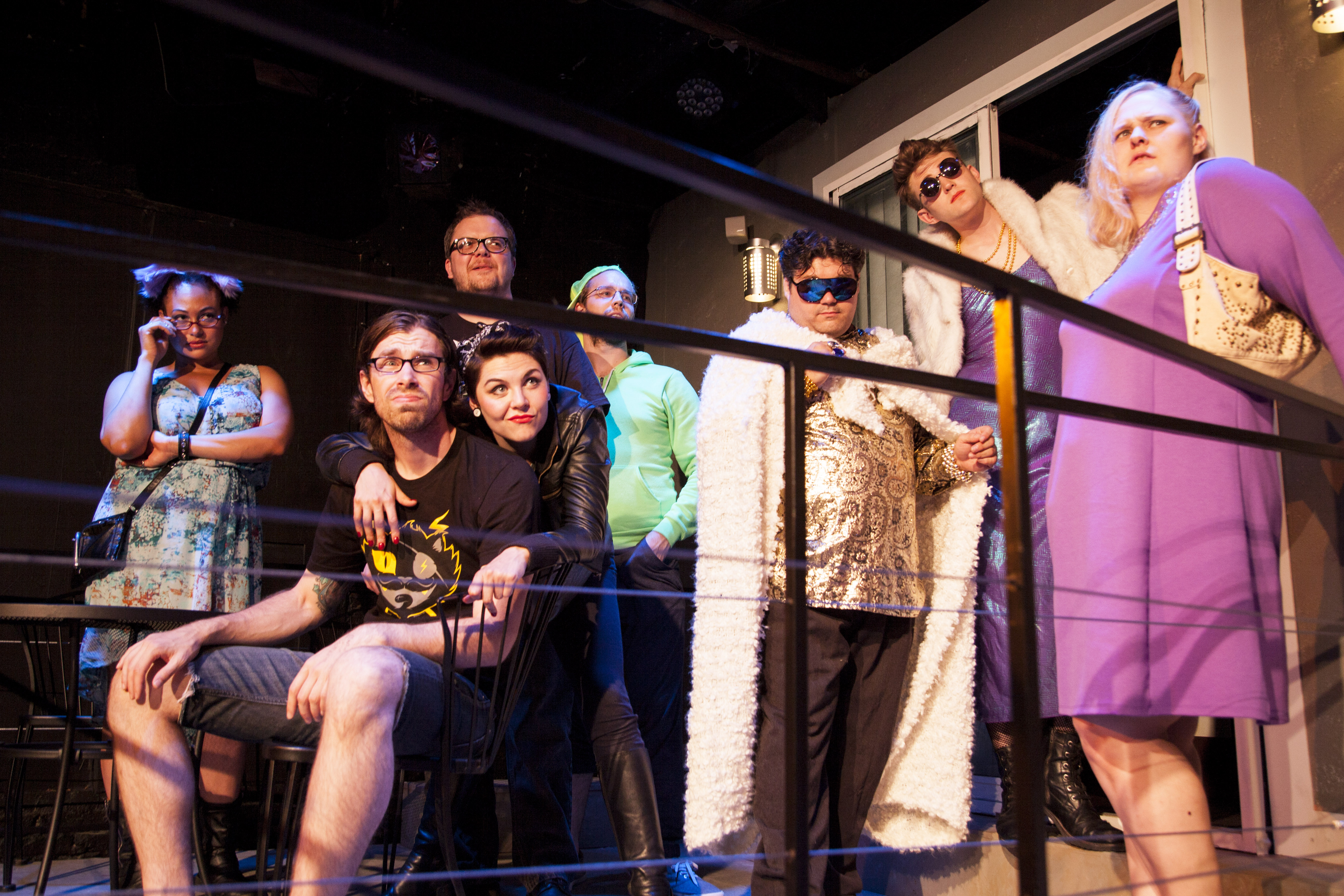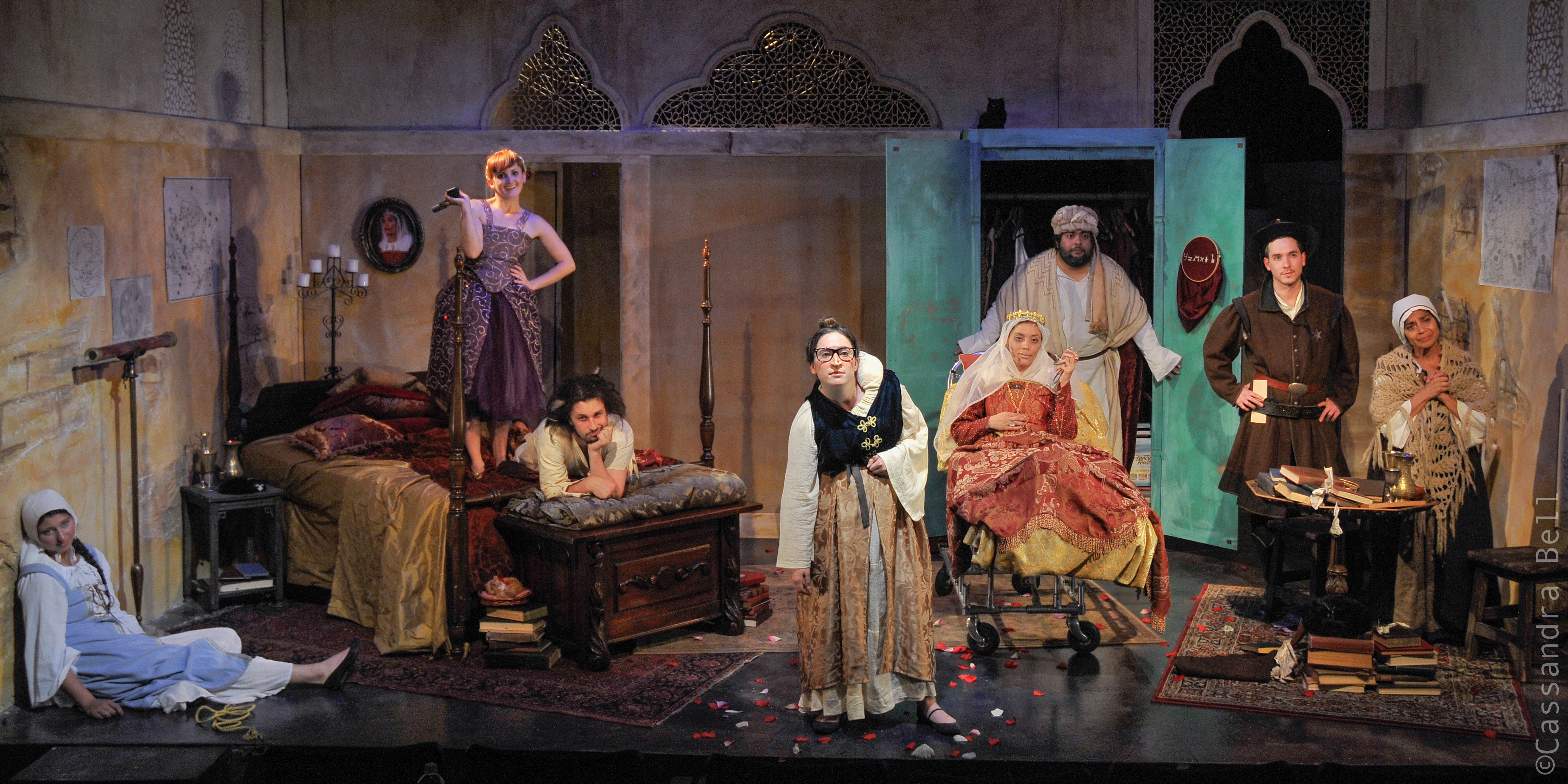Ever wondered how to tell an EMT from a paramedic? Curious about proper medical procedure for chasing nubile ambulance escapees through rush-hour traffic on I-5? As it provides the answers, Clubfoot is more a staged reading than a full-blown theatrical production, but it’s also a grim thrill ride through the mean streets of Seattle, as Emergency Medical Technicians search for people to save—often from themselves.
Conceptually, the show grafts reality TV onto stage documentary. It mixes blood, gore, and the frustration of working with indigent, repeat clientele. There’s also the adrenaline rush of being first responders and the Godlike authority to “bring order out of chaos” at a scene. I’m not sure if this is the stuff that great playwrights dream of bringing to a live audience, but there’s no question that with this much viscera, the entertainment is, well…visceral.
Chris Dietz, Pamala Mijatov, and Ray Tagavilla enter to a mostly empty stage, read from their scripts at music stands, and interact to the extent permitted by the text (by Stephen McCandless, a former EMT, and erstwhile SW and Stranger contributor Bret Fetzer). That may sound dry, but the nonexistent production values, excepting a few light cues, are reminiscent of those twitchy press conferences outside hospitals, where some medical practitioner explains how the patient inside ain’t likely to make it.
Lest you think Clubfoot is all about shock, needle sticks, and too few rubber gloves, the show also takes aim at the American health-care system. One local hospital is simply dismissed as “a warehouse,” where patients are stacked like cordwood until sufficient beds are filled to score enough insurance money to keep the place afloat another day. And if there’s an overarching theme to the show, it’s that no one cares enough. Motorists try to outpace speeding ambulances. Parents and children abandon their loved ones rather than help them through life’s final passages. And even the EMTs championed in the play allow that getting all worked up about human tragedy simply slows their ability to perform their duties.
Clubfoot, a somewhat labored metaphor for evolutionary mutation, is far from a finished work. One problem is the staging: How could costumes, a set, or music amplify this show’s message? But with such eminently watchable performances—all three principals play multiple roles—and such rich material, the long-term prognosis is good. In the meantime, have a look at this work in progress. Just remember not to eat anything beforehand that might make you queasy.









